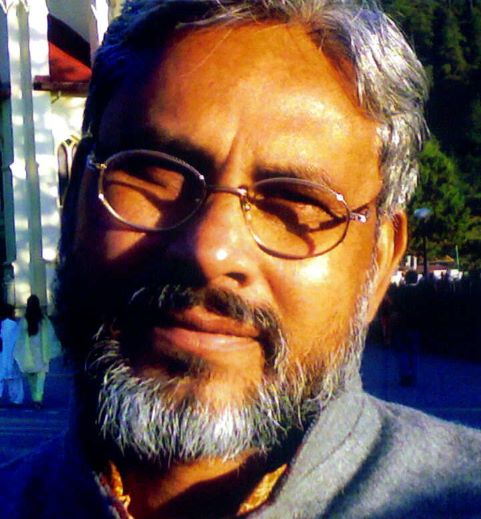Quit India Movement: The violence-non-violence question
Prem Singh
(SAMAJ WEEKLY)- The Quit India Movement, also known as the August Kranti (Revolution), was a pivotal chapter in India’s freedom struggle. This movement was country-wide in which the people of India participated on a large scale and showed unprecedented courage and tolerance. Dr. Ram Manohar Lohia, while quoting Russian revolutionary thinker Leon Trotsky, stated that in Russia’s revolution one percent of the population took part, while in India’s August Revolution, 20 percent of the country’s people participated.

But, every now and then, it is at the centre of a debate on whether it was a non-violent or a violent movement. Mahatma Gandhi’s speech on August 8, 1942, the eve of the movement’s launch, has its own place in history. An excerpt from the speech goes: “Here is a mantra, a short one, that I give you. You may imprint it on your hearts and let every breath of yours give expression to it. The mantra is: ‘Do or Die’. We shall either free India or die in the attempt; we shall not live to see the perpetuation of our slavery. Every true Congressman or woman will join the struggle with an inflexible determination not to remain alive to see the country in bondage and slavery. Let that be your pledge.”
It is clear Gandhiji, let alone direct violence, never even hinted at any form of provocation. This call for non-violent resistance was unique at a time when humanity was engulfed in the fire of World War II. The All India Congress Committee passed the Quit India resolution on August 8, 1942. By the following night, top Congress leaders had been arrested. Thanks to their arrests, an action plan for the movement could not be prepared and communicated. The relatively young leadership of the Congress Socialist Party (CSP) became active but had to work underground. Jayprakash Narayan (JP) wrote two long letters while in hiding to guide the revolutionaries, and to explain the character and mode of action of the movement.
Despite facts to the contrary, Viceroy Lord Linlithgow alleged that the Congress had tried to overthrow British rule through armed resurrection during the movement. Ram Manohar Lohia wrote a long letter from jail to the viceroy on March 2, 1946. The letter brings out the brutal and conspiratorial character of British imperialism during the Quit India Movement. After playing an underground role in the movement for 21 months, Lohia was arrested in Bombay on May 10, 1944. He was first imprisoned in Lahore Fort, and then in Agra. He suffered inhuman torture at the hands of the British police in Lahore. He was released in June 1946. In the interim, his father passed away, but Lohia refused parole on a matter of principle.
In his letter, Lohia refuted Linlithgow’s accusations and spoke about the latter’s administration committing horrific atrocities on unarmed participants. He said that the British suppression of the movement led to many Jallianwala-Bagh-like incidents, but the people of India persevered non-violently for their freedom. He wrote, “If we had planned an armed insurrection and our crowds were asked to resort to violence, believe me, Linlithgow, Gandhiji would today have been securing a reprieve for you from the free people and their government.”
Confronting the viceroy over the barbarism of his administration, he wrote, “You talk of fascist reprisals; your men have raped and killed wives of patriots you could not seize. Yes, the time will soon be ripe for you and your people to face this evidence.” In those moments of distress, Lohia was still filled with hope that the sacrifices of tens of thousands of Indians during the movement would be paid for, and wrote, “But I am not unhappy. It has ever been the destiny of India to suffer for others and to take man away from his erring path. The history of the unarmed common man begins from the Indian Revolution of August 9.” He further clarified, “We are curious about the future. Whether you win or the Axis, there will be gloom and darkness all around. There is a glimmer of hope. Free India might be able to bring this war to a democratic termination.”
JP’s two letters to “the soldiers of freedom” were written in December 1942 and September 1943. In both his letters, especially in the first, he raised, and deliberated upon, the question of violence-non-violence at length. He slammed the British government, saying it did not have the right to weigh in on what was the method the people of India used to fight for their freedom. He said that at the core of the Quit India Movement was the resolve not to kill or hurt.
He wrote, “To create hurdles for the British Raj, to overthrow it by paralysing it by every non-violent means, is the basic mantra of that program and ‘you can do everything within the realm of non-violence’ is our pole star. There is no doubt that the intellectual basis of the program which has been followed by the Congress bodies since August 1942 till now is non-violence – non-violence in the sense which has been suggested by its masters during this period.”
How a non-violent movement was made possible amidst a raging World War certainly demands serious analysis, if only to give those intellectuals who fixated on the Indian role in violence in 1942 (and also in 1857) a much-needed perspective.
(The writer associated with the socialist movement is a former teacher of Delhi University and a fellow of Indian Institute of Advanced Study, Shimla)










